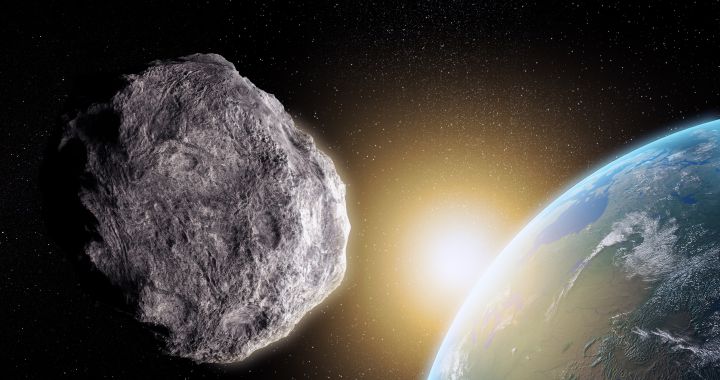The night sky never ceases to amaze. In a year full of events such as the penumbral lunar eclipse on May 5, Spanish scientists from the Gran Telescopio de Canarias del Roque de los Muchachos made a discovery that has the astronomical community excited: a mini-moon that will accompany Earth on part of its annual journey around the Sun for the next years.
This is, according to the Instituto de Astrofísica de Canarias (IAC), the asteroid 2022 NX1a body 5 to 15 meters in diameter that inhabits the edge of Earth’s co-orbital space whose the origin was recently determined to be incompatible with the Moonone of the hypotheses that had been considered when it was discovered last summer 2022.
Regarding its composition, this mini-moon, the name by which this type of asteroids that share a trajectory with the Earth is generally known, everything is in the air; because the tests obtained so far by the scientific teams have not made it possible to determine whether it is a predominantly rocky body or one with a high metal content.
Asteroid 2022 NX1 was first sighted in July 2022 by the team of amateur astronomers at the Hakos Mountains Observatory in Namibia, and only days later became visible to stargazers again. Complutense University of Madrid (UCM) and those of the IAC, which found it thanks to the OSIRIS telescope on the island of La Palma.
“2022 NX1 follows a co-orbital movement with our planet, that is, they together complete an orbit around the Sun in 365 days, traveling at the same speed”, explained UCM researcher Raúl de la Fuente Marcos to the scientific agency SINC. of the authors of this curious find.
De la Fuente Marcos insisted that this mini-moon that has so aroused astronomy enthusiasts does not orbit planet Earth as the Moon does, but rather moves in a horseshoe path who will do the next the year 2051 is temporarily captured by the gravitational energy of our planet which could make it collide with us in the mid-70s of this century. Of course, experts say that if that happened, it wouldn’t pose any danger to life on Earth, because the size of this mini-moon makes it harmless.
“Its size is smaller than that of the asteroid which gave rise to the Chelyabinsk superbolide on this Russian city in 2013, so the consequences of any impact would be minimal,” De la Fuente Marcos told Sinc.
The researcher clarified that “there are dozens of NEOs that come and go drawing this strange horseshoe along the same orbit as our planet”. “As they approach it, they usually turn around, but every now and then some of them are temporarily captured by its gravity and become mini-moons,” the Sinc agency explained in an attempt to shed light on the what is happening with asteroid 2022 NX1. .
The fourth mini-moon
Asteroid 2022 NX1 is the fourth mini-moon scientists have discovered so far. Before its appearance in the field of view of terrestrial telescopes, scientists had already discovered the asteroid RH 120 in 2006, CD3 in 2020 and VG in 1991, three bodies which, in the first two cases, have already carried out several orbits around our planet and that, in the last, only an arc of its orbit around the Earth runs through it.

